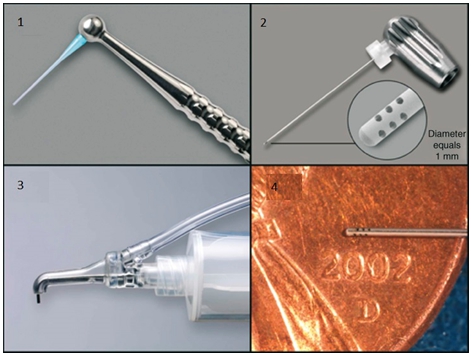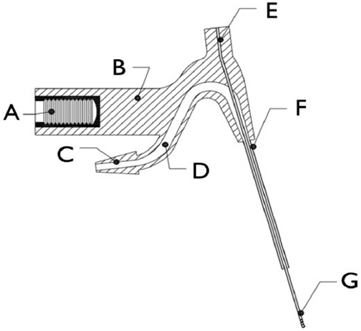ULTRASONIC IRRIGATION PROTOCOLS IN ENDODONTIC
Байкулова С.Б.1, Макеева М.К.2 , Даурова Ф. Ю.3
1ORCID: 0000-0001-5989-6911, Ординатор,
2Кандидат медицинских наук, старший преподаватель,
3Доктор медицинских наук, профессор, Заведующая кафедрой терапевтической стоматологии,
1,2,3Российский Университет Дружбы Народов, Москва
ЭНДОДОНТИЧЕСКИЕ ИРРИГАЦИОННЫЕ ПРОТОКОЛЫ С ИСПОЛЬЗОВАНИЕМ УЛЬТРАЗВУКОВОГО НАКОНЕЧНИКА
Аннотация
Цель данного литературного обзора заключается в рассмотрении основных ультразвуковых ирригационных эндодонтических протоколов и сравнение их характеристик. В ходе исследования рассматриваются такие факторы как удаление смазанного слоя, антимикробная активность, проникновение ирригантов в латеральные ответвления системы корневых каналов. Данные факторы напрямую влияют на успешный исход эндодонтического лечения.
Материалы и методы: Для составления обзора использовали поисковую базу ресурса PubMed.
Заключение: Ультразвуковая активация эндодонтических ирригационных растворов повышает его эффективность, а также улучшает дезинфекцию системы корневых каналов. С другой стороны, существуют опасности вывода ирриганта в периапикальное пространство и образования воздушной пробки.
Ключевые слова: ультразвуковая ирригация корневых каналов, пассивная ирригация, продолжительная ультразвуковая ирригация, апикальное негативное давление, смазанный слой.
Baykulova S.B.1, Makeeva M.K.2, Daurova F. Y.3
1ORCID: 0000-0001-5989-6911, Postgraduate student,
2MD, Senior Teacher of operative dentistry department,
3MD, Professor, Head of operative dentistry department,
1,2,3Russian University of People Friendship, Moscow
ULTRASONIC IRRIGATION PROTOCOLS IN ENDODONTIC
Abstract
The aim of this literature review is to introduce main ultrasound irrigation protocols and compare its characteristics. These factors like removing of smear layer, antimicrobial properties, penetration in laterals canals increase successful treatment outcome.
Materials and methods: This literature search used PubMed databased.
Conclusion: Ultrasound agitation of endodontic fluids solutions enhances effectiveness of irrigants, improve the disinfection of root canal system. On the other hand, exist opportunity of periapical extrusion of fluids and vapor lock formation.
Keywords: ultrasound irrigation root canal, passive ultrasonic irrigation, continuous ultrasonic irrigation, apical negative pressure, smear layer.
IntroductionUltrasound (US) is sound waves with frequencies higher than the upper audible limit of human hearing. The rang of US frequencies is between 24-40 kHz. Ultrasound is a multifunctional dental device, especially in endodontics. It is used as diagnostic applications, for disinfections and treatment modalities like finding calcified canals, removing of intracanal obstructions and, of course, increasing action of irrigating solutions. The effectiveness of US in the fluids is determined by the ability to produce «cavitation» and «acoustic streaming». Acoustic streaming characterized by circular moving of liquid around the oscillating file in the irrigant. Cavitation effect has another mechanism. US waves create bubbles in the liquid, which it comes into contact. These bubbles have positive or negative pressure. Shortly, they become unstable, hereupon burst. Releasing energy responsible for detergent effect and reduction of the intracanal biofilm.
Thereby, US activation of root canal irrigants like EDTA and NaOCl still remains the gold standard in endodontic treatment [1, P. 2].Effective irrigant delivery and agitation increases chances of successful outcome of treatment. There are a lot of different irrigations protocols and methodics with using of US, which will be reviewed in details.
Passive Ultrasonic Irrigation (PUI)
Term PUI was first described by Weller [2, P. 3]. PUI is the most popular irrigation protocol. Each root canal after mechanical preprocessing filled by irrigant. NaOCl US activation from 30 sec to 1 min for each canal with 3 cycles will be enough to obtain cleaned it. Very important, US needle or smooth wire (size 10-20) must oscillating fluently in the root canal and doesn’t touch its walls. After each cycles, operator must refresh the irrigant, because ions of chlorine after activation lose their antibacterial properties. In comparison, with syringe irrigation (SI), it removes more soft tissue remnants, reduces amount of planktonic bacteria and debris. But, this method could transport irrigant farther then a distance at which the instrument acts. That leads to extrusion of NaOCl into periapical tissues. Operator should remember about this, because for better irrigation of apical part of the canal needle must be placed nearby apical constriction. So on, working length should be shorter than master file to a few millimeters. Furthermore, NaOCl reacts with organic matrix and forms air bubbles — main reason of vapor lock. Vapor lock is prevented fluids from reaching in the periapical tissues. Moreover, acoustic and cavitation vibes aren’t effective under such conditions. Further, amount of active irrigant that is small, thereby limiting its debridement efficacy [3, P.789-790].
Continuous Ultrasonic Irrigation (CUI)
These methods main idea is constant flow of irrigant activated by special devices. For example VPro StreamClean attached to a piezoelectric unit. In the beginning, operator inserts needle into the canal and solution is delivered. Ideally, continuous irrigant agitation with active rotary instrumentation would generate an increased volume of flow, increase irrigant expositions, and facilitate depth fluid penetration within canal. Constantly, needle must move vertically. Analysis under scanning electron microscope (SEM) obtain that such method is more effective removes smear layer than usual SI. Also, probability of irrigant extrusion is less expected [1, P. 3]. Some investigations postulate than this method effective only in coronal third. In the apical and middle parts of root canal, its works worse. This is also confirmed by Walters et al [4, P. 837], who found that, there was no significant difference between SI and irrigation with the Quantec-E pump. M. Middha et al., (2017) evaluated CUI effect on postoperative pain compare with SI [5, P. 522]. Mean postoperative pain was lower in the CUI as compared to SI group, but the difference was significant on the first day only.
Intermittent Flush Ultrasonic Irrigation (IFUI)
IFUI is another variant of CUI protocol. Endodontic fluids solution is activated by ultrasonically oscillating instrument. In comparison, with CUI, fresh solution portion is delivered to the root canal by syringe after the previous one has become ineffective and removed. This way, irrigant flush ought to better remove debris and smear layer. On the other hand, according to some researchers, there is no significant different between CUI and IFUI [6, P. 1541].
Apical Negative-Pressure Irrigation
The most popular Negative-Pressure devices are EndoVac (SybronEndo) (Fig. 1) and RinsEndo (RinsEndo, Co. Duerr- Dental, Bittigheim-Bissingen, Germany). EndoVac comprise macrocannula (Fig 1 for the coronal and middle part and microcannula for the apical part, the Master Delivery Tip which provides a constant irrigant flow and The Multiport-Adapter for dental aspiration module and all parts of this system. Cannulas connect with syringe full of irrigant. Operator inserts macrocannula in the root canal, its deletes all debris produced by mechanical instruments. System delivers an irrigant, EndoVac creates a negative pressure and sucks the fulfilled irrigant. It lows risk of periapical extrusion. Apical Negative Pressure reduces the opportunity of this hazard, so that lets to clean better canal’s apical part. Then operator changes macrocannulas to micro and repeats irrigation. Constant fresh irrigant flow is more effective deletes SL than another most wided irrigation methods [7, P. 3].

Fig. 1 – EndoVac system
1 - macrocannula; 2 - microcannula demonstrating the evacuation holes in the apical 0.7 mm; 3 - master delivery tip; 4 - microcannula
Continuous Apical Negative-Pressure Ultrasonic Irrigation (CANUI)
CANUI is a brand new concept for agitating fluids proposed by Pablo Castelo-Baz et al [3, P. 3]. They united concepts of CUI and negative pressure irrigation approach. High efficiency, constant activation of irrigant, its replenishment and low possibility of periapical extrusion make it a perfect device (Fig. 2). It has plastic body with a few joint connections. One of them responsible for aspiration, the second one for irrigant delivery, the third one connected with US unit for activation. After debridement, microcannula of devise inserts into the canal until the point 0.5 mm less the working length. Then started delivery of the solution, activation and aspiration. In researcher’s opinion this device would totally improve irrigation’s protocol and make it easier. But, today we haven’t enough researches, confirming or refuting efficiency of this approach.

Fig. 2 – Schematie of device
A- female iron threaded connection; B – plastic body; C – plastic truncated joint connection; D – cylindrical hollow conduit; E – plastic circular joint connection; F – stainless steel coronal cannula; G – apically microcannula
Conclusion
US is widely distributed in the worldwide dentists community. Acceptable price, ease in use, multitasking make it a perfect working tool. Such irrigathion protocols are the optimal alternative to standard syringe irrigation. These approaches allow enhancing irrigant’s contacts with canal walls, its penetration in the laterals and isthmuses. In comparison, US with of Er, Cr or YSGG laser, there is no significant difference, but US approach is more acceptable [8, P 314.]. Moreover, some investigators published that US agitation could increase calcium’s hydroxides antimicrobial action [9, P 575.]. In spite of a lot of advantages, US has limitations in use.
Unfortunately, US approach doesn’t work in narrow root canals with a very difficult anatomy. In such conditions US needle gets in touch with canal’s walls. It leads to the increasing of cavitation and acoustic streaming effects and effectiveness of this approach at all. Operators must remember about vapor locks and risk of periapical extrusion. In spite of these factors, US irrigations protocol will stay very popular in endodontic treatment for a long time ahead.
Список литературы / References
- Jamleh A. Irrigation effectiveness of continuous irrigation system: An ex vivo study / A. Jamleh, H. Suda and C. Adorno // Dental Materials Journal – 2017 – 1 – 5.
- Weller R.N. Efficacy of ultrasonic cleaning / R.N. Weller, J.M. Brady, W.E. Bernier // J Endod – 1980 – 740 – 3.
- Castelo-Baz P. Continuous Apical Negative-Pressure Ultrasonic Irrigation: A new concept for activating irrigants / P. Castelo-Baz, P. Varela-Patino, M. Ruiz-Pinon, F. Abella, R. Miquens-Vila, B. Martin-Biedma // J Clin Exp Dent – 2017 – 9(6) – 789 – 793.
- Walters M. Efficacy of irrigation with rotary instrumentation / M. Walters, J. Baumgartner, J. Marshall // J Endod – 2002 – 28 – 837 – 9.
- Middha M. Effect of continuous ultrasonic irrigation on postoperative pain in mandibular molars with nonvital pulps: a randomized clinical trial / M. Middha, P. Sangwan, S. Tewar, J. Duhan // International Endodontic Journal – 2017 – 50 – 522 –530.
- Tanomaru-Filh M. Intermittent or continuous ultrasonically activated irrigation: Micro-computed tomographic evaluation of root canal system Cleaning / M. Tanomaru-Filh, F. Torres, G. Chávez-Andrade, M. Miano, J.M. Guerreiro-Tanomaru // Clin Oral Invest – 2016 – 20 – 1541 – 1546.
- Plotino G. New Technologies to Improve Root Canal Disinfection / G. Plotino, T. Cortese, N.M. Grande, D.P. Leonardi // Brazilian Dental Journal – 2016 – 27(1) – 3 – 8.
- Ch L. Comparison of antimicrobial activity of Er, Cr: YSGG laser and ultrasonic irrigation in root canal disinfection / L. Ch, Q. Zhong // SHANGHAI KOU QIANG YI XUE – 2017 – 314 – 316.
- Arias M. P. Effect of ultrasonic streaming on intra-dentinal disinfection and penetration of calcium hydroxide paste in endodontic treatment / M. P. Arias, A.G. Maliza, R.Z. Midena, M.S. Graeff, M.H. Duarte, F.B. De Andrade // Appl Oral Sci J – 2016 – 24(6) – 575 – 581.
- Plotino G. Ultrasonics in Endodontics: A Review of the Literature / G. Plotino, C.H. Pameijer, N.M.G. Somma, F. Somma // JOE - 2007 — 6(35) – 791 – 804.
